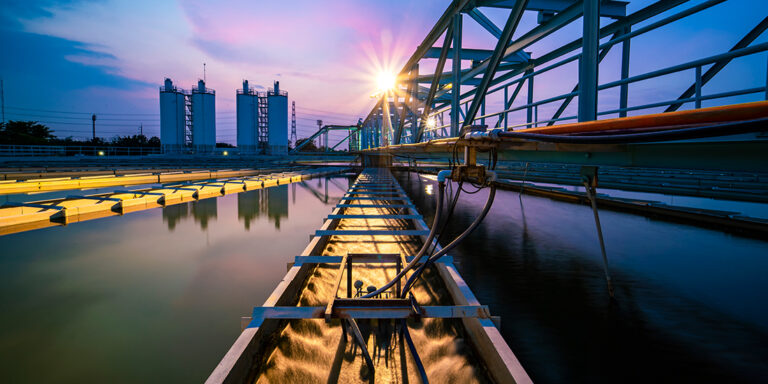Water management entities are turning to advanced digital tools to conserve the world’s most precious resource.
Photo: Sustainable water management requires revisiting policies, investing in infrastructure, and embracing data-driven processes.
“California Water Wars” might sound like a new reality show for 2023, but in fact, this conflict took place more than 100 years ago, when William Mulholland built the California aqueduct and diverted water from the Owens Valley straight to Los Angeles, leaving the eastern region of the state barren. The unscrupulous tactics—which inspired the 1974 film masterpiece Chinatown—shined a harsh light on the ongoing need for better water management. The industry is still grappling with challenges that are forcing water organizations, cities, states, and governments to find new ways to protect and manage the planet’s most critical resource.
Every day, billions of gallons of water are wasted. With climate change affecting weather patterns and severity, an exploding population, pollution, and inequitable access to safe water, there is an urgent need for more sustainable water resources management.
What will it take? The practical list is long: new policies, investing in infrastructure, and a digital approach to water management that uses data to guide action. But sustainable water management is also a mindset. The industry can set regulations, but there must be buy-in from the public, which needs to understand the urgency of the situation to create a sustainable future.
What Is Water Management?
Water management is the process, planning, oversight, and evaluation of collecting water from a source; diverting, cleaning, and getting it to an end user; removing the water after it is used; treating it; and disposing of or recycling it. It entails securing the rights to the water, building the infrastructure, and creating the policies that govern water quality and quantity.
Humans use water for three primary purposes:
1. Agriculture, 70%
2. Industrial, 19%
3. Domestic, 11%
Water management includes:
- Providing drinking water from source to tap
- Ensuring water quality is safe and contaminant-free
- Managing the infrastructure involved in water catchment, transport, and cleaning
- Removing wastewater from communities
- Diverting water from sources (lakes, reservoirs, groundwater, and so forth) to reach communities
- Overseeing stormwater management and flood control
Water is a shared resource, but there are 148,000 different […]
Full article: redshift.autodesk.com

